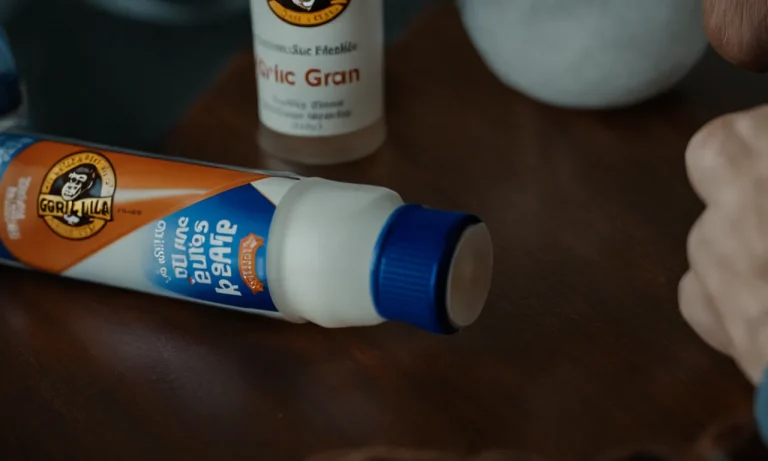Is Polyester Cheaper Than Cotton? A Detailed Comparison
When shopping for clothing, bedding, or other textiles, one of the first considerations is often cost. Polyester and cotton are two of the most common fabric types, so buyers may wonder – is polyester cheaper than cotton?
If you’re short on time, here’s a quick answer: Yes, polyester is generally cheaper than cotton. The main reasons are that polyester is cheaper to manufacture and easier to produce in large quantities compared to natural fibers like cotton.
In this comprehensive 3,000 word guide, we’ll dive into all the details around polyester vs. cotton costs, including manufacturing, sourcing, and environmental impacts. We’ll also compare the durability, longevity, and maintenance costs of these two popular fabrics.
Read on for the full scoop on which textile offers more bang for your buck over the long run.
Manufacturing and Material Cost Differences
Polyester Production Process
Polyester is a synthetic material that is made from petroleum, coal, or natural gas. The production process involves polymerizing these raw materials to create long chains of polyester fibers. This process is highly mechanized and requires advanced machinery and technology.
The cost of manufacturing polyester is relatively low due to its mass production capabilities and the abundance of raw materials.
Cotton Production Process
Cotton, on the other hand, is a natural fiber that comes from the cotton plant. The production process involves planting, harvesting, and ginning the cotton to remove the seeds. After ginning, the cotton fibers are spun into yarn and then woven or knitted into fabric.
The production of cotton requires significant labor and resources, including land, water, and pesticides. This makes the manufacturing cost of cotton higher compared to polyester.
Raw Material Sourcing
In terms of raw material sourcing, polyester has an advantage over cotton. Polyester is made from synthetic materials, such as petroleum, which are readily available and can be sourced from various regions globally.
On the other hand, cotton requires specific climatic conditions and fertile soil for cultivation. This means that cotton production is limited to certain geographical areas, leading to higher transportation costs and potential supply chain disruptions.
It’s important to note that while polyester may have a lower manufacturing cost, it also has environmental impacts. The production of polyester involves the extraction and processing of non-renewable resources, which can contribute to pollution and greenhouse gas emissions.
On the other hand, cotton is a natural and biodegradable material, but its production can have negative effects on water usage and pesticide use.
Environmental Impact and Sustainability
When it comes to comparing the environmental impact and sustainability of polyester and cotton, there are several factors to consider. Let’s take a closer look at some of the key aspects.
Water and Pesticide Use for Cotton
Cotton is known to be a highly water-intensive crop, requiring significant amounts of irrigation to grow. According to the World Wildlife Fund (WWF), it takes approximately 2,700 liters of water to produce a single cotton t-shirt.
Additionally, cotton farming often involves the use of pesticides, which can have negative effects on both the environment and human health.
On the other hand, polyester is a synthetic fiber derived from petrochemicals and does not require as much water for production. However, it’s important to note that the production process for polyester still involves water usage and the release of pollutants into the environment.
Microplastics from Polyester
One of the main concerns with polyester is the shedding of microplastics during washing. These microplastics are tiny particles that can easily find their way into water bodies and pose a threat to marine life.
According to a study published in the journal Environmental Science & Technology, a single load of laundry made with synthetic fabrics like polyester can release up to 700,000 microplastic fibers.
While cotton does not contribute to the issue of microplastics, it’s important to consider other environmental impacts associated with cotton production, such as water pollution from pesticides and the use of land for cultivation.
Recyclability and Biodegradability
When it comes to recyclability and biodegradability, polyester falls short compared to cotton. Polyester is a synthetic material that is not easily biodegradable and can take hundreds of years to decompose.
However, polyester can be recycled to create new fabrics, reducing the need for virgin materials.
Cotton, on the other hand, is a natural fiber that is biodegradable and can break down relatively quickly. It can also be recycled, although the process is not as efficient as with polyester.
Durability and Lifespan
When comparing polyester and cotton, it is essential to consider the durability and lifespan of both fabrics. This factor plays a crucial role in determining which fabric is a better investment in the long run.
Strength and Wear Over Time
Polyester is known for its high strength and resistance to wear and tear. It is a synthetic fabric made from petroleum-based products, which gives it excellent durability. Polyester fibers are incredibly strong and can withstand frequent use and washing without losing their shape or breaking down.
This makes it an ideal choice for items that undergo a lot of wear, such as athletic wear, outdoor clothing, and upholstery fabrics.
Cotton, on the other hand, is a natural fiber that is not as strong as polyester. While cotton is durable and can withstand regular use, it may not hold up as well as polyester in high-stress situations. Over time, cotton fibers may start to weaken, leading to fabric thinning and tearing.
However, with proper care, cotton garments can still last for a long time.
Pilling and Color Fading
One common concern with polyester is its tendency to pill. Pilling occurs when short fibers on the fabric’s surface tangle together, forming small balls of fuzz. This can happen due to friction from regular wear and washing.
While polyester is more prone to pilling compared to cotton, advancements in fabric technology have reduced this issue. Manufacturers now often blend polyester with other fibers to minimize pilling.
Cotton, on the other hand, is less likely to pill. It has longer fibers that do not tangle as easily. However, cotton is more prone to color fading, especially when exposed to sunlight or frequent washing.
The vibrant colors of a cotton garment may gradually fade over time, giving it a worn-out appearance. To maintain the color of cotton fabrics, it is recommended to wash them in cold water and avoid direct sunlight when drying.
Laundering Effects
Both polyester and cotton can be easily laundered, but they have different characteristics when it comes to washing and drying.
Polyester is known for its quick-drying properties. It does not absorb as much water as cotton, so it dries faster after washing. This makes polyester garments a convenient choice for those who prefer shorter drying times or do not have access to a dryer.
Additionally, polyester is less prone to wrinkling, reducing the need for ironing.
Cotton, on the other hand, absorbs water readily and takes longer to dry. This can be a disadvantage for those who need their clothes to dry quickly. However, cotton has the advantage of being highly breathable and comfortable to wear, especially in hot and humid climates.
Care and Maintenance Costs
When comparing polyester and cotton, it’s important to consider the care and maintenance costs associated with each fabric. While both fabrics require regular cleaning, there are some differences in how they should be cared for.
Washing, Drying, and Ironing
One advantage of polyester is that it is generally easier to care for compared to cotton. Polyester is known for its wrinkle-resistant properties, meaning it requires less ironing than cotton. This can save you time and energy in your laundry routine.
Additionally, polyester is less likely to shrink or stretch in the washing machine, making it a more durable option.
Cotton, on the other hand, may require more attention when it comes to washing and drying. It is recommended to wash cotton garments in cold water to prevent shrinkage, and they may need to be ironed more frequently to remove wrinkles.
Cotton can also be more prone to fading over time, especially if exposed to direct sunlight.
Stain Removal
When it comes to stain removal, both polyester and cotton can be treated with various stain removers and detergents. However, it is important to note that polyester is more resistant to stains compared to cotton.
Polyester fibers have a smooth surface that makes it difficult for stains to penetrate deeply. This can be particularly beneficial if you tend to be accident-prone or have young children who are more likely to spill or stain their clothes.
On the other hand, cotton can be more absorbent, which means it may be easier for stains to set in. It’s important to treat stains on cotton garments promptly to increase the chances of successful removal.
Cost Per Wear
When it comes to the cost per wear, polyester tends to be a more affordable option compared to cotton. Polyester garments are often less expensive to purchase initially, and they also tend to be more durable, which means they can withstand more wear and tear over time.
This can make polyester a cost-effective choice, especially for items like t-shirts, activewear, and everyday clothing.
Cotton garments, while generally more expensive upfront, can still offer excellent value for money due to their comfort, breathability, and longevity. Cotton is a natural fiber that can withstand frequent washing and wear.
Additionally, cotton garments tend to age gracefully, becoming softer and more comfortable with each wear.
It’s important to note that care and maintenance costs can vary depending on the specific garment and its quality. Always refer to the care instructions provided by the manufacturer to ensure you are properly caring for your polyester or cotton items.
Conclusion
In summary, polyester tends to be cheaper upfront than cotton due to more efficient and scalable production methods using synthetic materials derived from petrochemicals. However, cotton’s natural origins make it more sustainable long-term.
While cotton requires more care, its durability can make it more cost effective per wear when properly maintained.
Consider both the upfront price and ongoing care costs when choosing between polyester and cotton fabrics. Understanding the manufacturing processes and environmental impacts can help inform your purchasing decisions as a conscious consumer.







